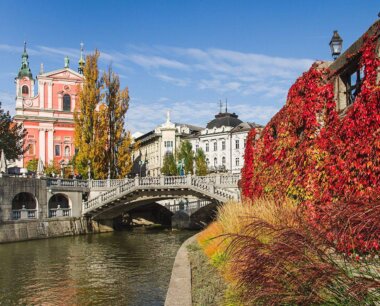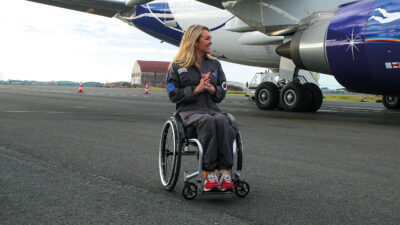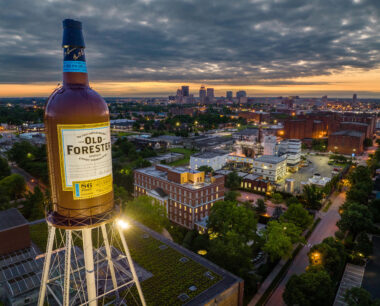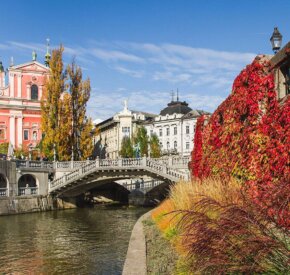
Pearls, souks and ancient civilisations: Discovering the soul of Bahrain beyond the skyscrapers
A bit like its legendary oysters, it takes a little patience to prise open Bahrain and its cultural history, writes Martin Symington
Bahrain’s World Trade Centre is a pair of colossal curved horns connected by a trio of bridges which support whirring wind turbines. A sky-scraping H turns out to be the Four Seasons Hotel shaped, apparently, in deference to ruling King Hamad. The glinting, gun-metal helix of United Tower – home to both the Wyndham Grand Manama and commercial offices – struck me more as a sky twister.
For this mesmeric view of Manama’s skyline, I had taken to the water on Bahrain Bay. Trying to hold my balance while standing on a paddleboard (unsuccessfully, but that’s another story), I gaped at the daringly-designed structures which spiral over the Bahraini capital’s harbour district.
“When I was a child, none of these were here,” said my erudite guide Husain Alhabib. Like elsewhere in the Arabian Gulf, ultra-modern buildings are the trappings of oil and gas-fired riches. Nevertheless, in the lee of this surreal spectacle is an incomparably richer thread of culture and tradition going back centuries – millennia even. “Over the coming days you will discover the soul of Bahrain,” promised Husain.
Pearl of the Gulf

Bahrain is a tiny country, just 786 sq km scattered across a sandy archipelago of 33 islands in the Persian Gulf. Manama is on the largest, Bahrain Island, which is linked to Saudi Arabia by the King Fahd Causeway. However, the modern city has only been the capital since 1932, when it was chosen to be the face of a territory at the dawn of a new epoch.
We reached the former capital, Muharraq, driving across a causeway from the neighbouring eponymous island. The joy I found in old Muharraq was meandering through the streets and alleys while discovering how much of the country’s fable-laden backstory is preserved. The call to prayer wavered in the air amid minaret-pricked roofscapes, scents of aromatic oils, and wooden-fronted shops selling brass lanterns, cloth keffiyehs and pearls.
Ah, pearls. Diving for pearls, and trading these across the globe, are a giant part of Bahrain’s history and cultural identity. I followed the Bahrain Pearling Path, a waymarked walking trail and tourism project which weaves through Muharraq Island. Punctuated with pearl-shaped lamps it connects pearling landmarks such imposing merchant’s homes and divers’ cottages, mostly from the 19th century. Some have been renovated as museums, telling the story of pearling in the pre-oil era.
I ended at Bu Maher waterfront where a visitor centre looks out over oyster beds in the tidal shallows. Bahrain, I had learned, means ‘two seas’ in Arabic, referring to the sweet water springs that bubble up into salt water. Over the glory centuries of the pearling era, this mingling produced the lustrous, perfectly shaped and subtly-hued specimens sought everywhere from the Far East to Western Europe and the Americas.
A pearl forms naturally when an oyster secretes layers of nacre around an irritant such as a grain of sand in its shell. But in the 1930s ‘cultured’ pearling – artificially introducing grit into a shell – was pioneered in Japan so successfully as to knock the stuffing out of Bahrain’s pearl-trading economy.
In a serendipitous twist of history, this happened at pretty much the same time as vast reserves of petroleum were discovered in Bahrain. From then on, the country’s transition to an oil and gas-based hub was breathless.
As I gazed across abandoned oyster beds towards the Qal’at al-Bahrain fortress, Husain told me: “When oil was discovered in 1932, the decision was taken to move the capital and help keep our heritage and traditions safe. That was far-sighted, because now our economy is shifting again, away from oil and towards tourism. Visitors now want to come and discover the depth of our history and culture.”
A rich history
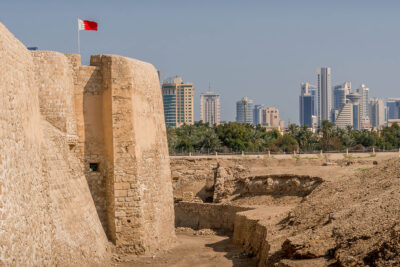
Qal’at al-Bahrain, commonly known as the ‘Portuguese Fort’, is an up-front example of the country’s history. It is true that the golden-glowing ramparts and turrets were built by the Portuguese during their 16th-century control of the Gulf. However, excavations have revealed the site to be a palimpsest of ruins stretching back 4,000 years to the bronze-age Dilmun civilisation.
In the ancient Mesopotamian poem Epic of Gilgamesh, Dilmun features as ‘a heavenly land, a place of everlasting youth; a holy place without illness and death.’ Sublime poetry, I mused while we drove south though sandy scrub strewn with thousands of dun-coloured humps like giant mushrooms. Immortality notwithstanding, these are in fact Dilmun burial mounds and have been preserved as testaments to the aeons-long history of habitation on these islands, with UNESCO declaring them a World Heritage Site in 2019.
Almost as if to emphasise the juxtaposition of eras, out of this landscape loomed the gigantic grandstand of Bahrain International Circuit where the annual Formula One race is held each April. “This is a huge event for us. Bahrain suddenly comes into world focus because millions of people around the world watch on TV. We were the first country in the Middle East to host a Grand Prix,” said Hassan.
The race is obviously a highlight of the Bahraini calendar. However, it seemed to me that if the country is truly shifting towards an economy reliant on tourism, the real allure lies in the soulful history, culture and heritage. All of this, along with some leisurely winter sun amid the country’s laid-back vibe, are what really suggest that Bahrain has a bright future.
Sea, sand and souks
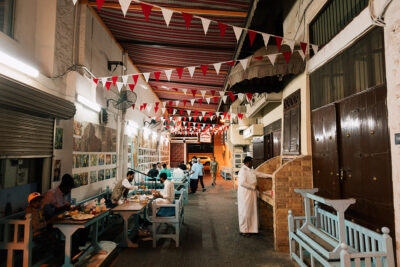
I was based at the Ritz-Carlton, one of several five-star hotels on Bahrain and Muharraq islands which have their own private marinas and beaches – this one of powdery sand at the edge of a calm, gently lapping lagoon. There are several others on the Persian Gulf shore and around Bahrain Bay, the swish waterfront development of high-rise towers, restaurants, bridges and islands where I had taken to the water on my paddleboard.
For a wilder encounter with Bahrain’s sea and sand, I boarded a speedboat to bounce, spray flying and spume fizzing, across the Gulf towards Qatar. It took us 45 minutes to reach a spangle gleaming in the blue with what looked like a mini lighthouse in the middle.
This was Jarada Island, where we dropped anchor just as the tide began to recede. Crescents of dazzling white seemed to rise out the water, creating rushing channels that calmed while Jarada multiplied several hundred times in size in an astonishing half an hour. What a place for a barbecue under the shade of a canvas gazebo before a stroll, ankles in the water, to the farthest tip where whimbrels were dipping long, curved beaks into the sand. After that I snorkelled in the gin-clear Gulf among waving coral nibbled by comical clownfish.
If nature and solitude on a far-flung speck were faces of Bahrain I had not expected, there were more surprises in store.
Back in the heart of Manama I discovered, cheek by jowl with the freakish modern buildings, an atmosphere-oozing old souk. At Haji’s Café I sat under an awning stretched across an alley for one of the most memorable breakfasts of my life. Dish after simple but delicious Bahraini dish arrived: cheese-filled flatbreads, foul (bean stew), potato and chili omelette, balaleet (sweet noodles), all with cups of saffron-flavoured milk (acquired taste).
Next, I followed my nostrils towards the aromas of turmeric and sandalwood in Manama’s Little India. To a background of Bollywood songs I found myself immersed in gold merchants’ shops, sari boutiques and fairy-lit stalls setting everything from samosas to powder for henna tattoos. I popped in to the Shri Krishna temple and paid my respects to marigold-garlanded statues to Hindu gods.
“People from south Asian have been here for 200 years. They are as Bahraini as we Muslim Arabs,” Hussain told me, insisting how much he always looks forward to Diwali and that he also celebrates Christmas with his Bahraini Christian friends. To emphasise the multi-faith milieu, we made our way to the nearby to St. Mary’s Indian Orthodox Cathedral, then past House of Ten Commandments synagogue where a small community of Bahraini Jews worship.
The landmark Al Fateh Grand Mosque, as you would expect, is on a dramatically different scale. This architectural marvel with its rocketing minaret and perfectly-proportioned dome and capacity for 7,000 worshippers is the only mosque in the country to welcome tourists. I also found that it, too, is multi-cultural in its own way with guides, many of them women, speaking numerous languages and inviting questions on any aspect of the mosque or of Islam.
The smooth, veined marble which cools floor and parts of the Sufi calligraphy-inscribed walls are Italian, guide Safina told me, while the exquisite central chandelier was designed and made in Austria. Everywhere you look there are carved teak ornaments from India and French hand-blown lamps, while acres of carpet come – surprisingly, to me at least – from Ireland.
Despite these extravagances, I left with the feeling that the mosque is less ostentatious than it might be. Rather like Bahrain as a whole, I reflected. From forts to prehistoric burial mounds, souks to temples, and chic waterside districts to desert islands, the soul of Bahrain is a bit like its legendary oysters: it takes a little patience to prise open.
Read next: 10 of the best things to do in Bahrain
